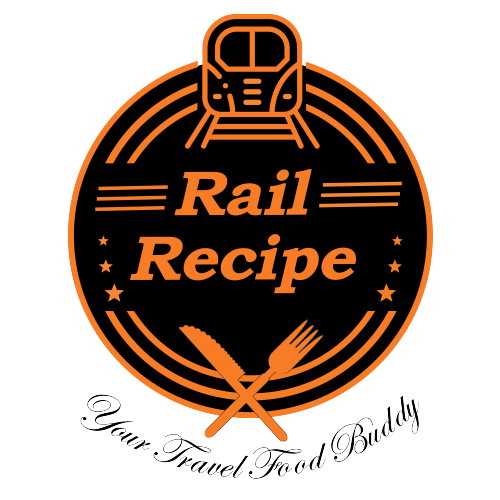“This too shall pass.”– A ray of hope sparks our minds as we read this proverb. Everyone’s suggesting ways to stay motivated and also find ways to grow during this lockdown due to the Covid-19 outbreak. Improving upon internal business solutions for better tomorrow is what everybody is focusing upon. Indian Railways can also use the current crisis as an opportunity to create a new business model by overhauling its passenger and freight segments, and that there are three areas the railway may focus on now in order to safeguard and improve the infrastructural needs.
Indian Railways- A Supportive Element of Indian Economy
Indian Railways plays a major role in the economy and the lives of people in India. It is the most preferred mode of travel for the masses in India. Also, it comprises major freight supplies for industries across the nation. Also, during the COVID-19 pandemic, Indian railways haven’t left any stone unturned to support the citizen’s needs. While the overall intermodal share of rail in freight traffic is around 35 percent, it continues to account for a major share in the transportation of bulk commodities – such as coal, iron ore, cement, and food grains – which are drivers of the economy.
The year 2020-2021 is expected to see the national and international economy bear the impact of the COVID-19 pandemic, which will also reflect on the transportation sector, including Indian Railways. Rail freight had already begun to show signs of marginal decline in the third quarter of 2019-2020 due to the deceleration of growth in core sectors of the economy. The economic impact of this pandemic shall linger much longer than the pandemic itself.
An Opportunity to Develop Amidst Crisis
However, as it is said, it often takes a crisis to seize opportunities. Railways have the choice to consider the current crisis as an opportunity and completely overhaul its passenger and freight transportation segments. This is the right time to look beyond the current year and chart a growth map for the next five to 10 years. Railways have played a crucial part in maintaining the supply of essential items and helping livelihoods by stepping up the transportation of goods – such as food grains, milk, and dairy products, the farm produces, medicines, etc. – by: Changing the traditional traffic routes, wherever required; aggregating small parcels and operating parcel cargo trains, and transporting critical medical equipment and Personal Protection Equipment (PPE).
Recommended Reading: Indian Railways Set to Manufacture 1 Lakh Washable Masks
Apart from this, Indian Railways has leveraged its resources and demonstrated the capability to manufacture PPE and COVID-19 isolation coaches. It has also used its outreach to distribute food and rations in far-flung regions. The ingenuity came alive in operating ‘Anaconda’ trains, which are thrice the standard length, and the launch of ‘SETU’ (Swift and Efficient Transport of Utilities) – a one-stop helpline for parcels traffic to bridge the gaps in the supply chain. The 24 x 7 Helpline number for SETU is 9878899068.
Shifting the Focus During Lockdown
The focus during this year can be on acting as a catalyst to restart the economy, which can be done by offering the right freight rates and by assisting the customers in reaching out to the railway, i.e. to enhance the ease of doing business.
Following are three focus areas that can enable the railway to turn-around and create a new business model:
- Amending the Passenger Segments through re-organization: Railways recognised the need to reduce cross-subsidy from freight to the passenger segment. Since most of the passenger services are priced much below cost and continue to incur heavy losses, it is necessary to first reorganize the passenger segment. At this point in time, passenger services are completely suspended, so now is the time to assess the entire passenger segment from the point of view of necessity and viability. These two criteria can be ascertained through factors like availability of alternative modes of transportation, the affordability of rail compared to other modes, distance and time leads, etc. There are segments that have well-developed road or mass rapid transport systems, like Metro railways. This is where the railway can work towards a reduced presence. Similarly, the road and air sectors have emerged as the preferred modes of travel for short and very long distances respectively. The railway must decide on a sector-by-sector strategy of pruning down less preferred services, keeping in view the specific local requirements.
- Finding Right Business Model for Freight Business: The cost of logistics in India is far higher than in developed economies. The social obligations of the passenger segment have been a defining factor in the pricing of freight traffic. Once the passenger segment has been reorganized, it would allow IR to focus more of its resources on freight traffic, including network capacity, rolling stock, and manpower. This is also expected to result in more efficient transportation and, thus, a significant increase in the volume of freight traffic. This is when it will be possible to rate the freight services more on actual economics and less on other considerations. Better efficiency and higher volumes will enable IR to bring down the freight rates while increasing freight earnings. More competitive pricing of freight will also be necessitated by fierce pricing competition from road transportation as soon as normalcy starts to return, as trucks (and drivers) would have been idling for long. This may potentially be a time when the railway will be at risk of losing its customers to the road, but will also have the opportunity to gain traffic.
- Diversify Freight Traffic: Industries in India has been undergoing a transformation in the way their transportation supply chains mesh with their manufacturing processes for a long time now. One of the major aspects of these changes has been a consistent cutting down of the transit time of inventory. Longer transit time, as well as any uncertainty in transit times, is not favored. The current crisis has given IR the opportunity to start with a much-needed trial of scheduled parcel trains and container cargo trains. In this period, the railway has successfully aggregated and transported parcels over long distances through scheduled parcel trains. These gains need to be consolidated and multiplied by chartering a medium- and long-term strategy for similarly scheduled parcel trains.
It is reasonably expected that efficiency in freight operations and the reorganization of passenger services will give IR the ability to achieve punctuality in freight operations, and thus attract time-sensitive cargo to rail – for example, fast-moving consumer goods, pharmaceutical, fruit, and vegetables, machine parts, etc. Indian Railways can form a powerful supply chain by joining hands with e-commerce giants and road logistics providers.
As American politician, R. Emanuel once said: “You never let a serious crisis go to waste…it’s an opportunity to do things you think you could not do before.” This is the time for IR to do zero-base assessments of services; to make rail freight more competitive.


